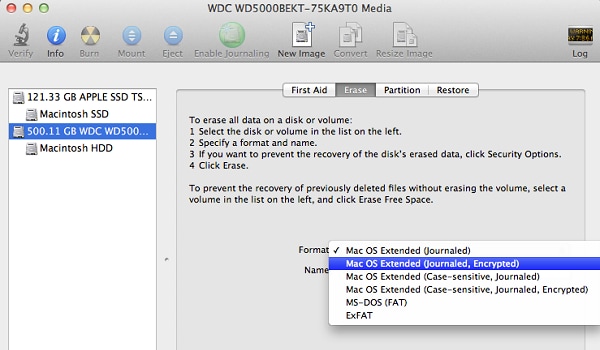Format External Drive For Mac And Pc

Aug 10, 2018 Why Need to Format External Hard Drive for Mac and PC. To put it simply, if you want to share external hard drive between Mac and PC, you need to format an external hard drive for Mac and PC. Currently, hard drives for Windows PC are always formatted with NTFS, while hard disks for Mac are formatted with HFS+. Find out how to format an External drive or USB disk making the drive work with both Windows PC and Mac can read and write. You will learn the easiest way to format drive on Mac and Windows as exFAT. How to format an drive to use with a Mac & PC. If you want to format a drive so that you can copy files between a Mac and a PC you'll want to follow the tutorial above, but choose ExFAT from the.
Oct 15,2019 • Filed to: Answer Hard Drive Problems • Proven solutions
External hard drives are the storage devices used to store and retrieve digital information, personal and official data like files, documents and other stuff. These are attached to systems through FireWire or USB connection or wirelessly to transfer data from the internal drive to hard disk drives. Fastest external hard drive for mac. If you are looking for new operating system or selling your old computers or laptops, then you need to set up an external hard drive for backups by erasing and formatting the existing data in the storage devices.
Hello Neighbor Mac OS X is one of the best games from this genre, we have no doubts about it. Released in the end of 2017 this game features modern graphics and a brand new AI system. Released in the end of 2017 this game features modern graphics and a brand new AI system. Apr 03, 2017 Hello Neighbor For Mac By tughan 3 April 2017 Hello Neighbor is one of the successful games of recent times. The game which has been developed by Tinybuild Games, a company that has created many successful games, has gained popularity at a very fast pace and it is now one of the most played games all over the world. 
Part 1: How to Format an External Hard Drive on Windows
The Windows users who are going to format external hard drive for the first time, they will get complete information and stepwise procedure of formatting drives.
Stepwise Procedure to Format Storage Device on Windows:
- Before formatting an external hard drive on Windows, back up all the informational data like files, music and official data into safe place.
- To format an external hard drive, plug in the device into system or a wall outlet.
- After plug in hard drive into the system, you will get option to open Windows Explorer and by clicking on the computer section in the side bar, you will see your hard drive get attached to your system.
- When you will do right click on the hard drive icon, you will get option to choose 'Format'?.
- After that, you can opt any file system that you want to use for the operating systems.
- Mention your hard drive with a name under Volume Label and check out the Quick Format box.
- To initiate the formatting process, click on the start button and within a few seconds, you will get notification when the process get completed.
- Open the hard drive in Windows Explorer and start dragging documents and files into it.
Follow the stepwise procedure to format an external hard drive and make sure it will not show similar free space as it displays on the box as the systems determine the space differently as it is marked on the box.
Video Tutorial on How to Format External Hard Drive
Part 2: How to Format an External Drive on Mac
Mac users can select any file system that supports their operating system. In order to format an external drive on Mac, you can follow stepwise procedure as discussed below:
Stepwise Procedure to Format Storage Device on Mac:
- Before starting storage device formatting process, you need to backup all informational data in a separate folder for the future use.
- Plug in the storage drive into Mac.
- The drive when get connected to the system, you can see the storage device icon on the screen.
- Now open the finder and check out the applications/utilities. After that, operate double click on the disk utility.
- To format external hard drive, opt your storage device in the left hand sidebar and click on the erase tab.
- After that, you will see format menu where you can select the file system that are compatible with your operating system.
- Describe or provide a specific name to your drive and click on erase button. Within a short time span, your storage device will get formatted.
- When you are done with the formatting process, click on the hard drive in the finder and initiate the dragging process or you can also set up as a backup storage device with Time Machine.
By following the stepwise procedure mentioned above, you can easily format the storage device on Mac.
What is External Hard Drive Formatting Process?
Formatting external hard drives is a process of deleting or erasing the memory chunks to avail the space for new data. Formatting can be performed at two stages: low level and high level process. Formatting may take few hours to wipe out the existing data, but the process can be hassle-free if you get to know about stepwise instructions of how to format an external hard drive.
How To Format External Drive For Mac And Pc
Low level formatting is the first process of wiping out data and existing files in the hard disk devices and at the high level, a new file system is generated. Technically, it is the process of writing a new directory structure which allows the documents and files to be overwritten and create space for the new data.
Before formatting external hard drives, backup all important data that you are going to format. Most external hard devices come with backup software that will make process much easier to do. If you have documents, music, photos saved elsewhere on computer then make sure you have copied all stuff before formatting. Remember once all the data get formatted, it will not be recovered at any cost.
File System Explained:
Before proceeding to format external hard drive, you need to know about file systems which are particularly associated with the operating systems. File systems are the key parts of translation from the physical data recording on a hard drive to the files that are read by operating systems only.
Various operating systems like Mac, Windows, Linux and OS X have different file systems to organize and store digital information. The most popular file systems are as discussed below:
- NTFS (New Technology File System): NTFS is developed by Microsoft, started with Windows NT 3.0. It is also known as Window's default file system. Microsoft has launched five versions of NTFS: v1.0 released with Windows NT 3.1, v1.2 with Windows 3.51, v3.0 with Windows 2000, v3.1 and v5.0 with Windows XP. The latest version includes many features like disk usage quotas, link tracking distribution, reparse points, file-level encryption and sparse file support. Windows can write and read to NTFS formatted hard drives while OS X and Linux can read only but can't write unless it is supported by third party devices like NTFS-3G. It has maximum 16 TB file size and 256 TB volume size.
- FAT 32 (File Allocated Table): It was designed in year 1977 for floppy disks and three major file systems variants are: FAT12, FAT16 and FAT 32. The older version of FAT was quite simple and robust. FAT32 has come up with the increased number of bits which is used to address clusters. It also helps to reduce each cluster size due to which it will have great storage capacity and effectively support the large disks up to 2 TB. It can be written and read to by Linux, OS X and Windows. FAT32 offers maximum 4GB file size and 2 TB volume size.
- ExFAT (Extended File Allocated Table): It is quite similar to FAT32 and is less commonly used. ExFAT can store up to 4GB files which make it perfect for flash drives. ExFat formatted drives can be read and written by OS X and Windows.
- HFS Plus (Hierarchical File System): It is developed by Apple Inc. It serves as primary file system of OS X and also known as Mac OS Extended. For those who are operating Windows on Mac with Boot Camp, they can read HFS plus hard drives but can't write to them. However, third party tools like Paragon HFS+ assist the users to write and read to HFS+ drives. HFS plus offers 8 EiB maximum file size and volume size.
These are the popular file systems for Windows, Mac, and Linux operating systems. For those who are running Windows computer, they can format hard drive as NTFS and for the Mac users; ExFAT will be the best and reliable option. Before formatting external hard drives, make sure you have created backup for the all important digital data. Nowadays, it is also possible to convert hard drive without losing any>Recover Your Drive
Mac Os Format Usb Drive
You may wish to use an external FireWire or USB hard drive to store your Aperture Library, referenced images, or Vaults. Here are some suggestions on preparing the external hard drive for best performance with Aperture. Many external hard drives come pre-formatted as FAT 32. This is a native Windows file format that can be read by Mac OS X, but is not ideal for use with Aperture.
Before you begin to use your new external hard drive with Aperture, reformat it to the Mac OS Extended file system:
Mac And Windows Compatible Format
- Be sure your drive is attached and mounted.
- If you have already written any data to the drive, back it up before proceeding to the next step.
- In the Finder, choose Go > Utilities. The /Applications/Utilities folder will open.
- Launch Disk Utility.
- Click the icon for your external hard drive in the sidebar on the left.
- Click the Erase tab along the top of the window.
- From the Volume Format menu, choose Mac OS Extended (Journaled).
- Enter a name for the external hard drive in the Name field.
- Click the Erase button.